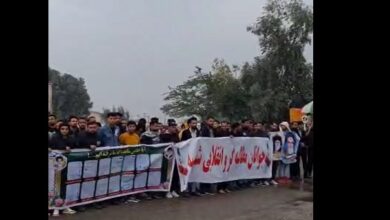
Archeology reveals the Persian lie and emphasizes the Arabness of Ahwaz
Over the past decades, archaeologists have discovered many historical facts that allow us to understand the history of our Arab region and the Sumerian and Elamite civilizations in particular, far from falsification.
Where most of the developments of archeology came contrary to the historical codifications promoted by Orientalists, picked up by non-Arabs, and promoted in order to strip the Arabs of their cultural heritage.
On the Ahwazi scene, the Ahwazi historian Hussein faragallah, through his field visits to archaeological sites in various regions of Ahwaz, as well as his books and scientific research, was able to reveal many historical facts that prove that the Elamite civilization is an Ahwazi civilization par excellence.
A document belonging to the British archive and published on the Qatar digital library website reveals the decision of the Iranian government in 1934 to name Elam after a town located outside the historical borders of Elam.
Since Iran has taken control of Ahwaz, it has relied on erasing non-Persian landmarks in order to blur the identity, Ahwaz, which was known in Persian documents and among the Persians in general as “Arabistan”, was replaced by the name “Khuzestan”, and this is normal, but it turned out to be more malicious when they named “Arabistan” to one of the neighboring countries, Saudi Arabia, which was known as “Saudi Arab kingdom” . Simultaneously with the naming of Khuzestan to Arabistan, the “kingdom of Saudi Arabia” became known as “Saudi Arabistan”.
The second misinformation is the separation of a large area of Ahwaz land located in the North and its annexation to a non-Arab town and the naming of “Elam” on the town [Deh Bala] located in the bishtkoh area, a non-Arab area located outside the historical Elam region. This is to urge the Ahwazi neighborhood to confiscate the cultural heritage of Elam, which is an Ahwazi cultural heritage without any doubt or hesitation. It is true that there are parts of eastern and Northern Elam that were subjected to Achaemenid [Persian] and Medes [Kurdish] occupations, so the identity of the Semitic populations in these parts was subjected to consecration and Christianization.




